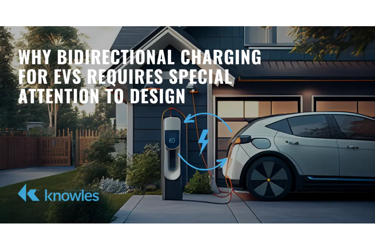Why Bidirectional Charging For EVs Requires Special Attention To Design

As interest and adoption increase in the electric vehicle (EV) arena, associated technologies are advancing quickly. Batteries are becoming more powerful and charging infrastructure is increasingly robust and efficient. With all these advancements, EV batteries are good for more than powering cars on the road.
Bidirectional charging capabilities are the next big perk for EV owners. Perfecting this technology means EV batteries can fuel vehicles and private homes or local grids. Right now, OEMs are part of a huge push to make bidirectional chargers resilient and reliable.
How Does Bidirectional Charging Work?
When an EV is charging, alternating current (AC) from the grid is converted into direct current (DC) electricity, which can be used by the vehicle. This conversion can be performed by the vehicle’s converter, or a converter located inside the charging apparatus.
During this process, semiconductors located inside the converter switch at high speeds to create a waveform that mimics DC electricity. In a unidirectional charging scenario, diodes continue sending current forward in one direction—towards the vehicle.
Get unlimited access to:
Enter your credentials below to log in. Not yet a member of Wireless Design Online? Subscribe today.
